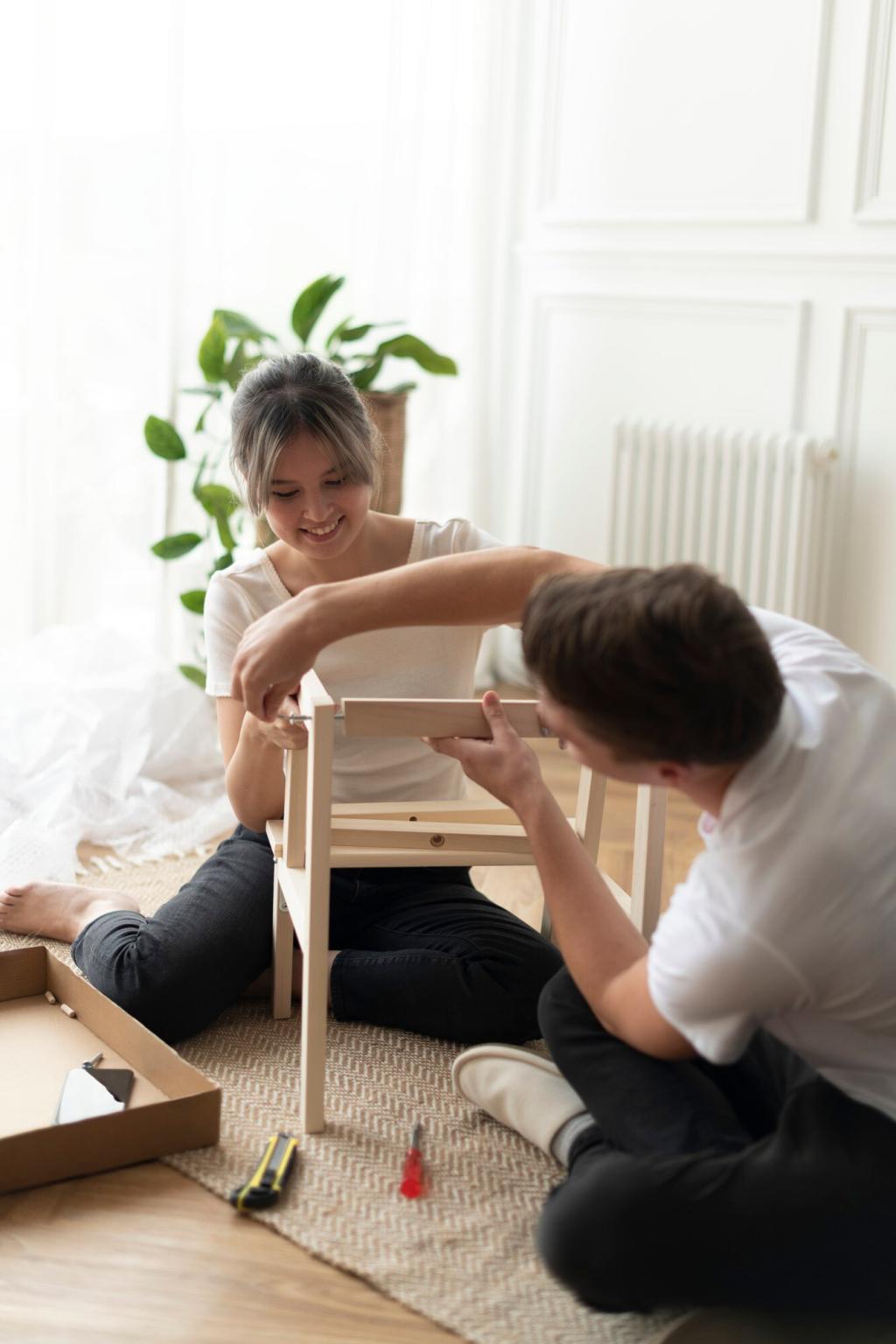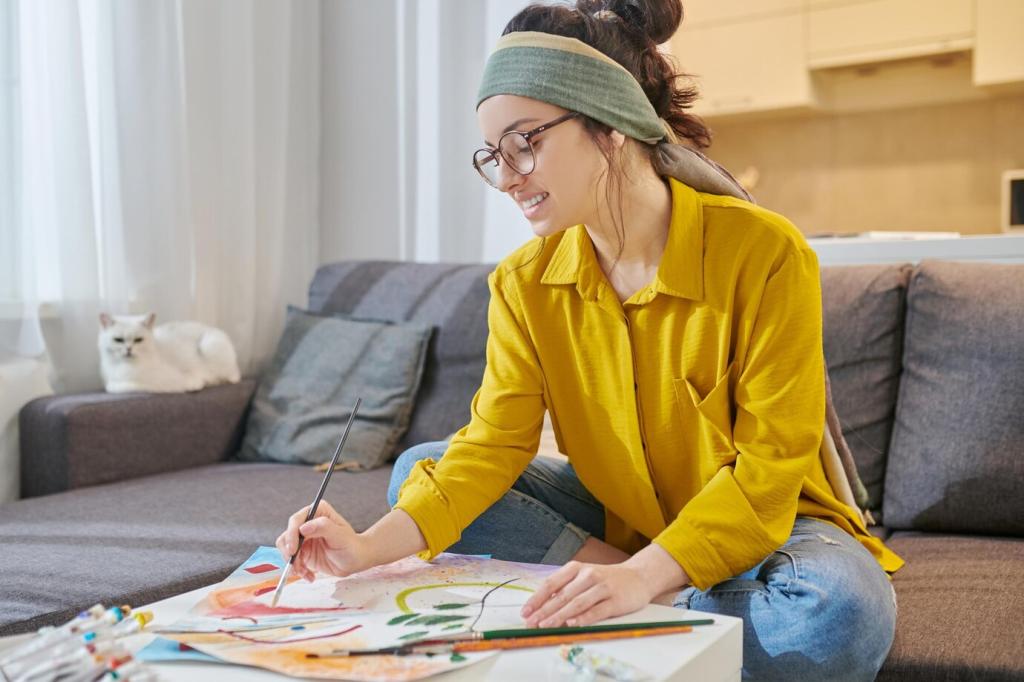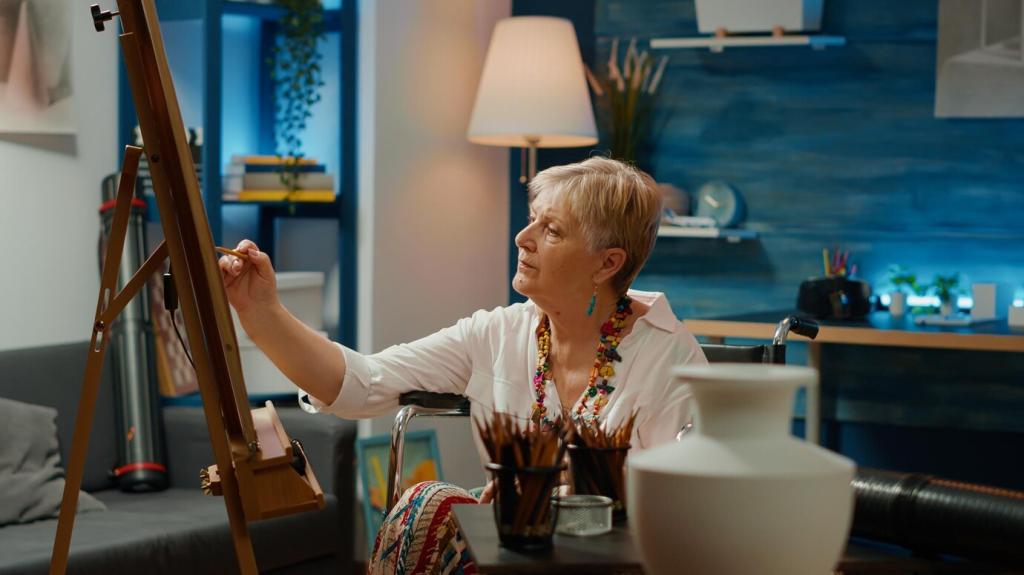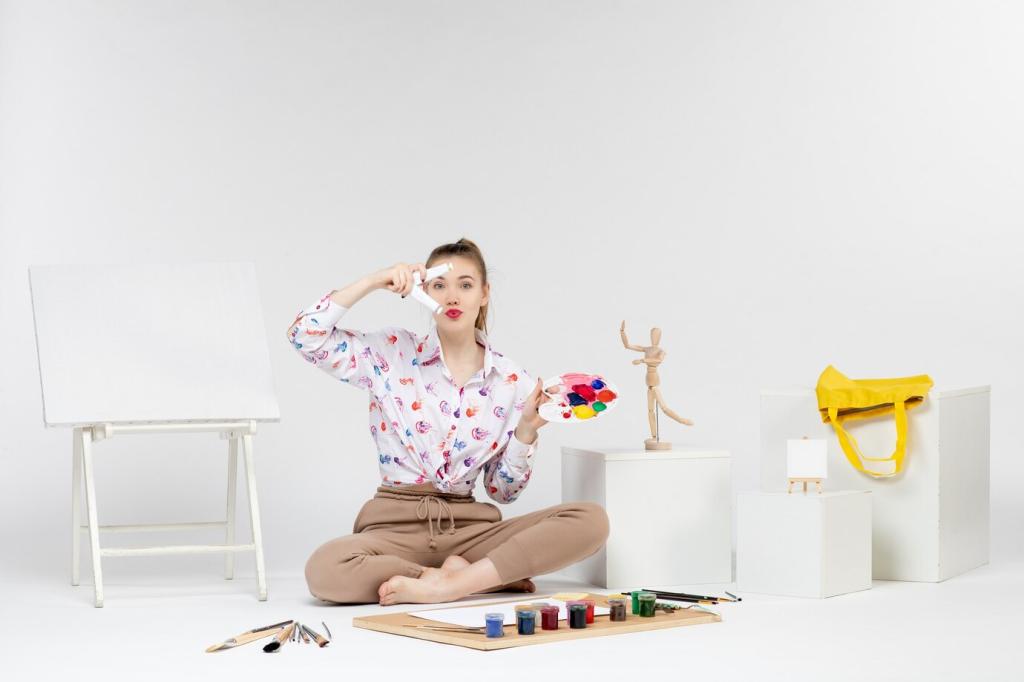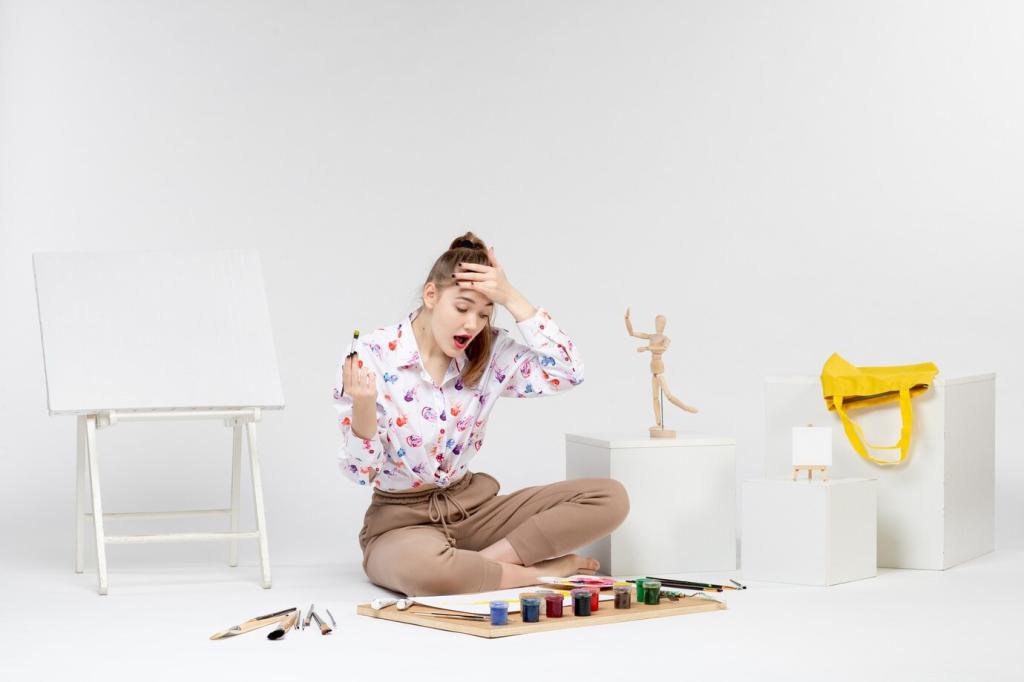Core Techniques with Stones, Leaves, Clay, and Pigments
Arrange stones in concentric circles, placing one with each exhale. Notice weight, temperature, and how patterns evolve. Photograph your mandala, then gently disperse it to practice non-attachment. Try this weekly and comment with insights about which shapes, sizes, or colors helped you feel most steady.
Core Techniques with Stones, Leaves, Clay, and Pigments
Create a story using leaves as characters and paths of twigs as journeys. Glue lightly so veins remain visible, then outline with soft pencil. Ask: Which leaf represents me today? Which one protects me? Share a snapshot of your narrative collage and reflect on the moment your plot surprised you.
Core Techniques with Stones, Leaves, Clay, and Pigments
Grind ochres and charcoal with a mortar and pestle, add a few drops of binder, and paint soft gradients that echo hills and shadows. Handbuild a pinch pot as a container for hopes or worries. Afterward, write what the clay taught your hands, and subscribe for next week’s pigment recipe.



